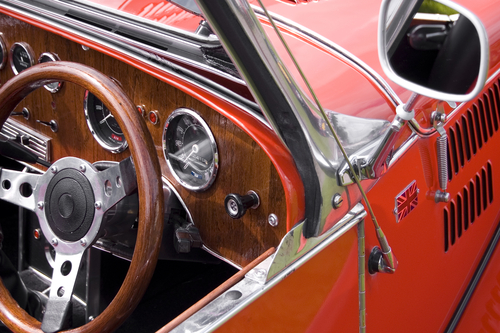
Condensation in Classic Cars: How to Stop it
October 22, 2019
To own a classic car is to love each and every detail of it. From the undercarriage to the stitching on the steering wheel, no element of a classic is worth ignoring.
It’s why threats to our classics are so vital, and why any of us go to great lengths to ensure our vehicles stay in show-quality. Those threats include everything from scratches, dings and nicks to more serious issues like engine failure.
However, there are few threats quite as pervasive as those created by moisture. Capable of corroding metalwork, rusting vital components and even compromising the structural integrity of your vehicle.
For most classic car owners, however, moisture manifests itself in one particularly frustrating way: condensation. We’ve all experienced it; a frustrating fog which coats the interior glass of our vehicles, but what causes condensation, and how do you stop it from happening? Join us as we explain everything you need to know.
What Causes Condensation, and What Damage Does it Do?
Condensation can come from any number of sources. All it requires is that damp air meets a cold surface. Whether that surface is your seats, glass, dials or electronics, it doesn’t matter. As long as the surface is colder than the warm damp air, then the moisture will be transferred to the cold surface.
Some of the most common causes of car moisture are:
- Wet clothes or shoes
- Human breath
- Leaks from your sunroof, ventilation system, doors, windows or soft top
- Hot drinks or food
- Damp carpets
Condensation is often little more than a nuisance on a cold day, but the long-term effects of it can be seriously harmful to classic cars.
Consistent build up of water on windows can lead to seals failing and water dripping through onto vital electronics and into the interior metal of your vehicle, causing rust and corrosion. Furthermore, damp interiors can destroy leatherwork, crack vinyl, encourage mould and more.
How Can You Prevent Condensation?
- Keep your car in a dry environment if possible. Our automotive humidity control solution reduced relative humidity (RH%) to extremely low levels, ensuring a completely dry interior.
- Close windows on wet days to avoid moisture entering your car – once it’s in, it’s hard to get out.
- Examine your car closely for signs of damp. Check your boot to see if water is pooling under your carpet, if so, you may have a leak.
- Use your air conditioning in winter. More than cooling or heating air, AC is a dehumidifier, pulling moisture from the interior of your car.
- Remove wet items from your car as soon as possible, whether that’s an umbrella, a jacket or a bag of gym clothing. Similarly, remove rubbish from your car. Cans, bottles and even sandwich containers all harbour moisture.
- Check the seals on your car. If they are old, they may fail, allowing water into the vehicle when it rains. Indeed, you should also check that the drain holes for your sunroof (if applicable) and lower windscreen panels are unblocked and free of debris. If these holes become blocked, water can overflow and enter the vehicle.
- For short term results, invest in a moisture absorber, ensuring to empty it daily.









